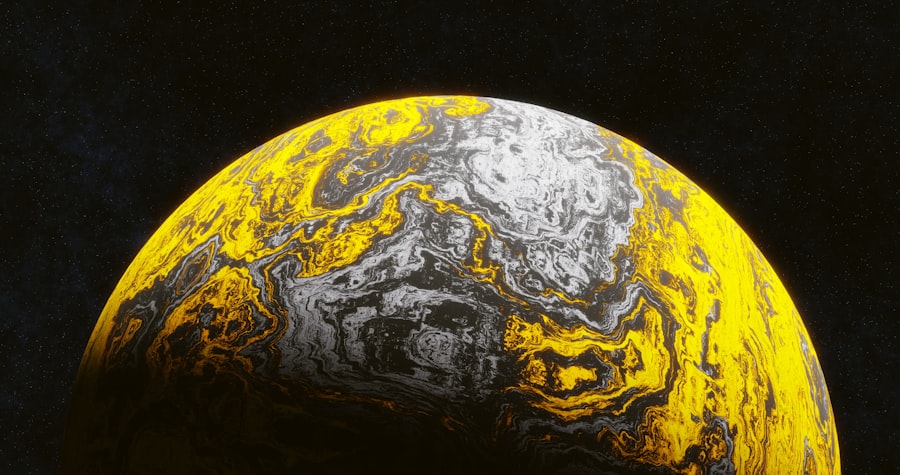The quest to find extraterrestrial life has captivated humanity for centuries, evolving from speculative fiction into a serious scientific endeavor. The discovery of extremophiles—organisms that thrive in extreme conditions on Earth—has expanded our understanding of where life might exist beyond our planet. For instance, the discovery of microbial life in the acidic hot springs of Yellowstone National Park and the deep-sea hydrothermal vents has led scientists to consider the potential for life in similarly harsh environments on other celestial bodies.
Mars, with its ancient riverbeds and polar ice caps, remains a prime candidate for hosting microbial life, while the icy moons of Jupiter and Saturn, such as Europa and Enceladus, are also under scrutiny due to their subsurface oceans. Recent missions have further fueled the search for extraterrestrial life. NASA’s Perseverance rover, which landed on Mars in February 2021, is equipped with advanced instruments designed to analyze soil samples and search for biosignatures—indicators of past or present life.
The rover’s findings could provide critical insights into whether life ever existed on Mars. Additionally, the James Webb Space Telescope (JWST), launched in December 2021, is expected to revolutionize our understanding of exoplanets. By analyzing the atmospheres of distant worlds, JWST may detect chemical signatures indicative of biological processes, thus bringing us closer to answering the age-old question: Are we alone in the universe?
Key Takeaways
- The search for extraterrestrial life continues with new discoveries and possibilities emerging.
- Recent breakthroughs have led to a better understanding of black holes and their secrets.
- New insights into the Big Bang theory are shedding light on the origins of the universe.
- Advancements in propulsion and exploration are shaping the future of space travel.
- Advancements in telescopes and observation technology are helping to map the cosmos in unprecedented detail.
Unraveling the Secrets of Black Holes: Recent Breakthroughs in Understanding
Black holes have long been one of the most enigmatic phenomena in astrophysics, challenging our understanding of gravity and the fabric of spacetime. Recent breakthroughs have shed light on their properties and behaviors, particularly through the Event Horizon Telescope (EHT) collaboration, which produced the first-ever image of a black hole’s event horizon in 2019. This monumental achievement provided visual evidence of the existence of supermassive black holes at the centers of galaxies, such as M87.
The image revealed a dark region surrounded by a bright ring of light, illustrating how matter behaves under extreme gravitational forces. Moreover, researchers have made significant strides in understanding the dynamics of black holes through gravitational wave astronomy. The detection of gravitational waves from colliding black holes by LIGO (Laser Interferometer Gravitational-Wave Observatory) has opened a new window into the universe.
These ripples in spacetime provide insights into the masses and spins of black holes, as well as their formation processes. The merger events detected by LIGO have confirmed that black holes can form from the remnants of massive stars and can also grow by merging with other black holes. This evolving understanding not only enhances our knowledge of black holes but also raises profound questions about their role in galaxy formation and evolution.
Exploring the Origins of the Universe: New Insights into the Big Bang Theory

The Big Bang Theory has long been the prevailing cosmological model explaining the origins of the universe. Recent advancements in observational technology and theoretical physics have provided new insights into this monumental event. The Cosmic Microwave Background (CMB) radiation, a remnant from the early universe, has been meticulously studied by missions such as the Planck satellite.
The data collected has allowed scientists to refine their estimates of key cosmological parameters, including the age of the universe, which is now estimated to be approximately 13.8 billion years. In addition to refining our understanding of the universe’s age, recent research has explored the conditions that prevailed during the first moments after the Big Bang. The concept of cosmic inflation—a rapid expansion that occurred within a fraction of a second after the Big Bang—has gained traction among cosmologists.
This theory posits that quantum fluctuations during inflation could have seeded the large-scale structure we observe today. Experiments designed to detect primordial gravitational waves from this inflationary period are underway, potentially offering direct evidence for this transformative phase in cosmic history.
The Future of Space Travel: Advancements in Propulsion and Exploration
| Advancements | Propulsion | Exploration |
|---|---|---|
| Ion Propulsion | Increased efficiency | Extended mission duration |
| Nuclear Propulsion | Higher thrust | Deep space exploration |
| Spacecraft Autonomy | Improved navigation | Autonomous operations |
| Reusable Rockets | Cost reduction | Access to space |
The future of space travel is poised for a revolution, driven by advancements in propulsion technology and exploration strategies. Traditional chemical rockets have served humanity well but are limited by their efficiency and speed. In recent years, researchers have been exploring alternative propulsion methods that could significantly reduce travel time within our solar system and beyond.
One promising avenue is ion propulsion, which uses electric fields to accelerate ions and generate thrust. NASA’s Dawn spacecraft successfully utilized ion propulsion to explore the asteroid belt, demonstrating its potential for long-duration missions. Another exciting development is the concept of nuclear thermal propulsion (NTP), which could enable crewed missions to Mars and beyond.
NTP systems use nuclear reactions to heat propellant, providing a much higher specific impulse than conventional rockets. This technology could cut travel time to Mars from several months to just a few weeks, making human exploration more feasible. Additionally, projects like SpaceX’s Starship aim to create fully reusable spacecraft capable of carrying large payloads and crew to various destinations in space, including lunar bases and Martian colonies.
Mapping the Cosmos: Advancements in Telescopes and Observation Technology
The field of astronomy has been transformed by advancements in telescope technology and observation techniques. Ground-based observatories equipped with adaptive optics can now correct for atmospheric distortions, allowing astronomers to capture images with unprecedented clarity. Instruments like the Keck Observatory in Hawaii have enabled detailed studies of distant galaxies and exoplanets, revealing new insights into their composition and behavior.
Space-based telescopes have further expanded our observational capabilities by eliminating atmospheric interference altogether. The Hubble Space Telescope has provided stunning images and invaluable data since its launch in 1990, but it is now joined by newer instruments like JWST. With its ability to observe infrared wavelengths, JWST is set to explore previously hidden regions of space, such as star-forming nebulae and distant galaxies formed shortly after the Big Bang.
These advancements not only enhance our understanding of cosmic phenomena but also allow us to map the universe with greater precision than ever before.
Understanding the Solar System: Recent Discoveries about Planets and Moons

Our solar system continues to reveal its secrets through ongoing exploration and research. Recent missions have provided groundbreaking insights into the characteristics and dynamics of various celestial bodies. For instance, NASA’s Juno spacecraft has been studying Jupiter since 2016, uncovering details about its atmosphere, magnetic field, and internal structure.
Juno’s findings suggest that Jupiter’s core may be smaller than previously thought and that its atmosphere is more complex than models predicted. The exploration of moons within our solar system has also yielded exciting discoveries. The Cassini mission provided a wealth of information about Saturn and its moons, particularly Enceladus, which is known for its geysers that eject water vapor into space.
These plumes suggest that Enceladus harbors a subsurface ocean, raising intriguing possibilities about its potential for hosting life. Similarly, NASA’s New Horizons mission provided a close-up view of Pluto and its moons in 2015, revealing a diverse landscape with mountains made of ice and vast plains that hint at geological activity.
Space Weather and Its Impact on Earth: The Latest Research on Solar Flares and Cosmic Radiation
Space weather refers to environmental conditions in space that can affect technological systems on Earth and human activities in space. Solar flares and coronal mass ejections (CMEs) are two significant phenomena that can disrupt communication systems, navigation satellites, and even power grids on Earth. Recent research has focused on understanding these events better to mitigate their impacts on our technology-dependent society.
The Solar Dynamics Observatory (SDO) has been instrumental in monitoring solar activity in real-time, providing valuable data on solar flares and their potential effects on Earth’s magnetosphere. Studies have shown that intense solar storms can induce geomagnetic storms that disrupt electrical systems and increase radiation exposure for astronauts in space. Understanding these interactions is crucial for developing effective forecasting models that can warn us about impending space weather events.
The Mysteries of Dark Matter and Dark Energy: Recent Findings and Theories
Dark matter and dark energy remain two of the most profound mysteries in modern cosmology. Together, they constitute approximately 95% of the universe’s total mass-energy content yet remain largely undetectable through conventional means. Dark matter is thought to be responsible for the gravitational effects observed in galaxies and galaxy clusters; however, its exact nature remains elusive.
Recent experiments using particle colliders like CERN’s Large Hadron Collider have sought to identify potential candidates for dark matter particles but have yet to yield definitive results. On the other hand, dark energy is believed to be driving the accelerated expansion of the universe. Observations from supernovae and galaxy clusters have provided evidence for this phenomenon, leading scientists to propose various theories regarding its nature.
Some researchers suggest that dark energy could be a property of space itself or a manifestation of modifications to general relativity at cosmological scales. Ongoing studies aim to refine our understanding of these enigmatic components through observational data from telescopes like JWST and upcoming surveys designed to map cosmic structures more accurately. The exploration of these topics not only deepens our understanding of fundamental physics but also challenges our perceptions about the universe’s composition and fate.
As research continues to evolve, it promises to unveil new dimensions of knowledge about our cosmos.


